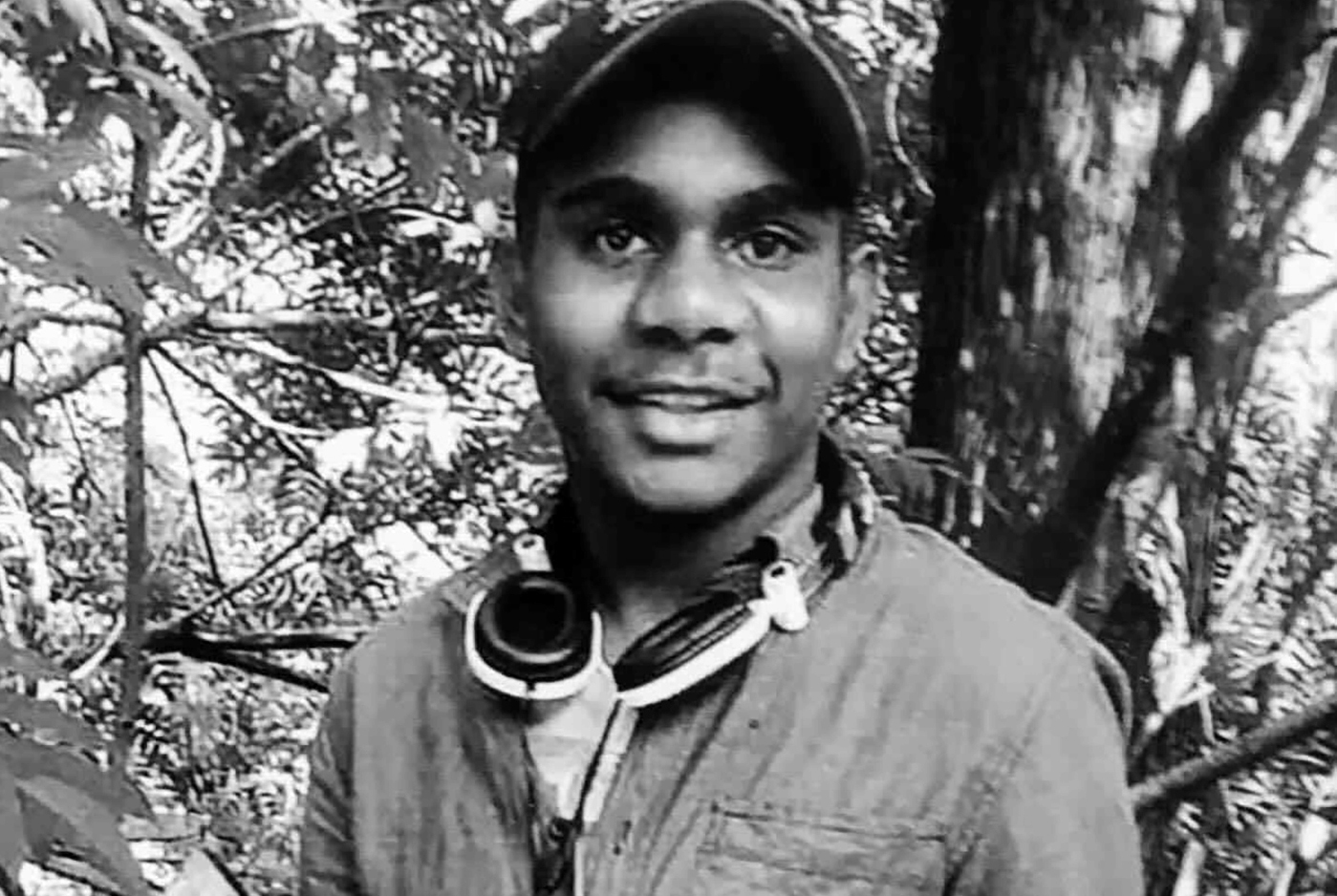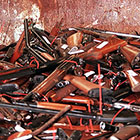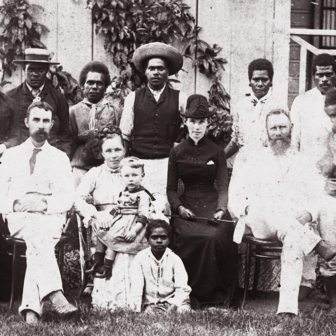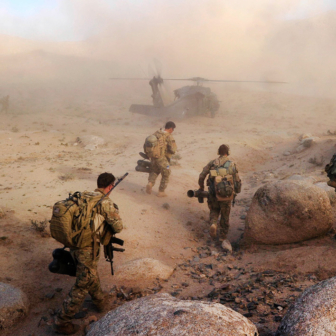Arrogant, disrespectful, racist and a liar. When the Northern Territory coroner presented her 683-page report on the death of nineteen-year-old Kumanjayi Walker on Monday, those were some of the descriptors she used about Zachary Rolfe, the then thirty-year-old police officer who shot and killed him.
It’s sadly not remarkable that the inquest into the death in police custody of an Indigenous man in remote Australia should hear evidence of his profoundly disrupted upbringing, chronic health conditions acquired in utero and exacerbated by disadvantage and trauma from exposure to violence, mental impairment and recidivist criminal behaviour.
It’s far less common, though, for a coroner to devote as much attention as Justice Elisabeth Armitage did to the background of the policeman from the “loving, stable family in Canberra” who, through what she called “officer-induced jeopardy,” created the circumstances that led to Walker’s death.
Armitage’s findings about Rolfe are scathing, the facts she unearthed appalling.
She concluded that Rolfe is racist and disrespectful of women, that racism was not just tolerated but celebrated within the NT police force, and that Rolfe’s sense of superiority over Indigenous people, and his practice of using excessive force against them, rang no alarms before 9 November 2019, the day Kumanjayi Walker died.
Most dramatic, though, is her finding on exactly what happened that night when Walker lashed out as two police tried to arrest him in a darkened house in Yuendumu.
At his criminal trial for murder in 2022, Rolfe testified that in the moments before he fired three shots at Walker in less than three seconds, Walker had grabbed his gun. When he reached for his Glock pistol, Rolfe told the jury, he felt Walker’s hand already on it. He was acquitted.
The police officer gave the same evidence to the inquest, which began soon after. There, the coroner also examined evidence she said had emerged since the trial that Rolfe had given at least three versions of that crucial event.
Armitage scrutinised Rolfe’s conversation with a colleague the morning after the shooting, his own record of the incident in his police notebook, and an almost-hour-long interview conducted only a month later with a journalist from the Australian, Kristin Shorten, who had expressed private support for him and offered to write a supportive story after his trial (which she did). In none of those accounts did he mention Walker’s hand on his gun.
Armitage also watched the footage from his bodycam. It showed no sign of Walker’s hand on the pistol.
Armitage noted Rolfe had told the inquest that losing control of a service weapon is “one of the most serious things that could happen to a police officer. Had that really happened, it is likely that Mr Rolfe would have disclosed that in at least one of his early accounts,” she wrote. “… Having reviewed the available evidence, I am firmly satisfied that the account given by Mr Rolfe about Kumanjayi’s hand being on his Glock cannot be accepted.”
Armitage’s twin portraits of the men at the centre of this case are vivid.
Born in Alice Springs, Kumanjayi Walker had recurrent pneumonia and gastroenteritis and was diagnosed with “failure to thrive” before he was a year old. His parents had substance-abuse problems and split up after his birth, his father’s new girlfriend becoming his primary carer and, the coroner noted, trying to do her best for him.
Persistent ear infections, a perforation in one eardrum and a foreign body in the other led to childhood hearing problems that seemingly went untreated.
His dad died when he was five, his mum when he was twelve, but contact with them had fallen away early.
Walker struggled at school, his life disrupted by violence in the community and at home when his carer’s new partner drank. Designated as a “special needs” child, he reacted aggressively to teasing from other kids and was regularly suspended. He began offending at age thirteen — mostly property crime, not violence — setting a pattern that was only broken by periods in custody or residential programs and, ultimately, by his death in the last year of his teens.
Zachary Rolfe’s early life, Armitage observed, was “far removed” from all that. He completed high school in Canberra with no exposure to Aboriginal history or issues and limited contacted with the one student there who was Indigenous.
The coroner dwelt more on Rolfe’s early military and policing career than on his childhood. He joined the Army in 2010, aged eighteen, and hoped to progress to the Special Air Service regiment, an ambition he didn’t fulfil. A year into his service, he was charged with public nuisance and violent behaviour and fined $300 after a fight on a night out in Queensland. A year or so after that, he and some military mates got drunk and stole tobacco from an army dorm. When he went to return it in the morning, he was reported to the military police. He pleaded guilty to theft and received a two-year good behaviour bond. When he later wanted to apply for the SAS, his superiors wouldn’t support him because he was still within the two-year penalty period.
In 2015, Rolfe left the army, still hoping one day to apply for the SAS. He took a privately run tactical firearms course in the United States and then returned to Canberra, where his father ran an Audi dealership, to work as a law clerk while he applied to join the police. Rolfe tried four forces — Victoria, Queensland, Western Australia and the NT — but lied about the previous infringement and whether he’d ever been the subject of investigation. Queensland, which had the records, rejected him on integrity grounds and banned him from applying again for ten years. The NT — his last choice — did no due diligence on his answers to integrity questions and accepted him.
Armitage explained in her report that she canvassed these details about Rolfe’s background and his brushes with the law and authority not because the conduct they involved was directly relevant to the inquest, but because of the lies he told about it. She pointed to evidence he had regularly had problems with the truth.
On 9 November 2019, Rolfe and his colleague ignored the authorised arrest plan — already wanted by police, Walker had waved a small axe at police who tried to arrest him three days earlier — and entered House 511. He grabbed Walker, who slashed him with scissors. The second officer grabbed Walker and, without warning, Rolfe then fired his Glock pistol three times, missing the other officer, who Armitage said was lucky, and hitting Walker first in the back and then in the side. He died just over an hour later. The lack of available medical assistance — the local clinic had been evacuated — was also examined during the inquest.
“Mr Rolfe was not an entirely credible witness,” Armitage found. Of his explanation for not following the arrest plan, she said: “His evidence was not convincing and defied common sense.”
The inquest heard Rolfe’s mental health had been declining in the months leading up to the incident on 9 November 2019. He had passed selection for the police Tactical Response Group but been overlooked for a position. Armitage described a text-message exchange Rolfe had with a friend the day after the shooting as suggesting he hoped the previous night’s show of force “might assist him.”
A psychiatrist gave evidence that Rolfe had started taking a prescribed anti-depressant a month earlier, which may have affected his self-control.
But there was also evidence that Rolfe had repeatedly used excessive force while serving with the NT Police, and that the police force was aware from 2018 of complaints about his aggressive behaviour, particularly towards Indigenous people. Psychometric testing conducted as part of the application process in 2016 had flagged Rolfe as disinclined to take responsibility for his mistakes, tending to minimise his role and blame others, scoring above average for aggression, and resenting authority.
“The warnings set out in the psychometric testing report now appear prophetic,” Armitage wrote. She observed that it “should have been obvious that action was required” but instead his actions were tacitly “and sometimes expressly” approved and the two sergeants tasked with mentoring him had endorsed and joined in his use of racist language and praised his claimed superiority over community “bush cops.”
“Ultimately, I have found that Mr Rolfe was racist,” Armitage wrote. She was not saying he was motivated by racism in shooting Walker but that his racist attitudes may have influenced his failure to take adequate steps to minimise the risk of a fatal interaction. She also condemned “entrenched systemic and structural racism within the NT Police.”
As coroner, Armitage could not — and did not — make any finding that anyone was guilty of an offence, nor any finding on Zachary Rolfe’s state of mind when he fired the three shots. In response to the findings, Rolfe issued a statement accusing the coroner of “infantilising” Indigenous communities. “The severity of Armitage’s criticism inadvertently highlights how effectively the police have safeguarded her privileged position, granting her a level of security and comfort that insulates her from the harsh realities faced daily by frontline officers and, more importantly, by countless victims of crime throughout the Northern Territory,” it said.
After a criminal trial and a coronial inquest, the justice system now closes the book on the killing of Kumanjayi Walker. But Elisabeth Armitage’s findings on the depth of prejudice in an institution supposed to protect people, and her comprehensive rejection of Zachary Rolfe’s version of events, will sit like a stain on its cover. •




